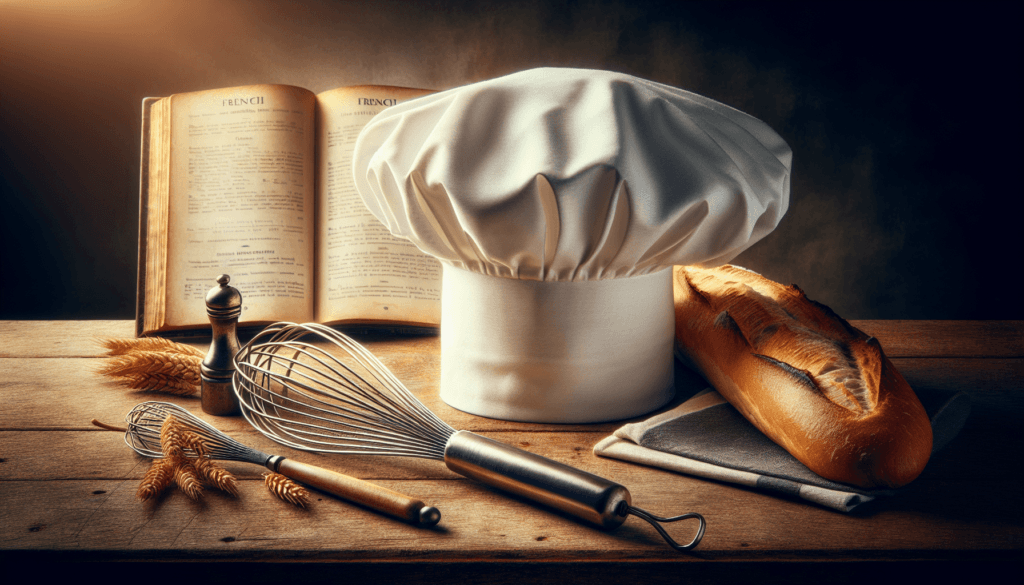Why Are Culinary Terms Mostly in French? Have you ever wondered why, when you step into a kitchen or read a recipe, you’re suddenly surrounded by a litany of French words? It’s as though French is the secret language of culinary arts. Let’s untangle this intriguing phenomenon together and uncover why French cuisine terms have become so embedded in our everyday culinary vocabulary.

Table of Contents
The Connection Between French Language and Culinary Arts
The intertwining of French language and culinary arts is a tale rich in history and culture. French cuisine has been celebrated for centuries for its innovation, sophistication, and meticulous techniques. But why exactly has French become the lingua franca of the culinary world? To truly understand this, we need to explore the roots of French culinary dominance and how it has influenced global cooking.
A Brief History of French Culinary Influence
The rise of French culinary influence dates back to the 17th century. During the reign of Louis XIV, France became synonymous with opulence and luxury. The French court popularized elaborate feasts and extravagant dining, setting trends across Europe. This period saw the emergence of haute cuisine, a style of cooking emphasizing high-quality ingredients and meticulous preparation methods—a craftsmanship that necessitated a new vocabulary.
The role of chefs like Marie-Antoine Carême and later, Auguste Escoffier, cannot be understated. These “kings” of haute cuisine revolutionized cooking techniques and wrote extensively, cementing French terminology in the culinary discourse. Carême is known for systematizing the grand cuisine of French royalty, while Escoffier modernized recipes and kitchen organization, influencing how culinary practices were taught and referred to globally.
Current Trends: Global Adoption of French Culinary Terms
The influence of French culinary terminology continues to expand even today. As food culture becomes more interconnected globally, these terms are preserved as a nod to culinary tradition and precision. In culinary schools worldwide, French terms remain a standard part of the curriculum, teaching aspiring chefs the essence of classical techniques.
Moreover, the media and popular culture further strengthen this trend. From cooking shows to food blogs, you often hear terms like “mise en place” or “sous-vide,” which symbolize a professional standard in culinary arts. The adoption of these terms signifies a level of respect for the art form and an aspiration to master the techniques they represent.
Key Concepts and Definitions
Deciphering French culinary terms can sometimes feel like learning a new language. Let’s unpack some core terms that you’ll often encounter, making them less intimidating:
- Mise en Place: This translates to “putting in place” and refers to the practice of preparing and organizing your ingredients before cooking. It’s the culinary equivalent of having your ducks in a row.
- Julienne: A knife technique that involves cutting vegetables into thin, matchstick-like pieces. It ensures uniform cooking and adds an aesthetic appeal to dishes.
- Bain-Marie: A method of gentle cooking using a water bath, perfect for delicate dishes such as custards or sauces that can easily curdle.
By demystifying these terms, you can appreciate the precision and thought that underpins classic French cuisine.

Practical Applications to Demystify French Terms
Let’s delve into some examples of how these terms are applied in the kitchen:
Example 1: Mastering Mise en Place
Take, for example, the preparation of a complex dish like boeuf bourguignon. Before you even turn on the heat, every ingredient—chopped onions, diced bacon, seasoned beef—must be prepared and measured. Having everything “en place” ensures a smooth cooking process, allowing you to focus on technique rather than scrambling to find ingredients mid-recipe. This exemplifies the discipline and order that French culinary practices endorse.
Example 2: The Art of Julienne
Consider how a simple dish of stir-fried vegetables is elevated through the julienne technique. By cutting carrots and bell peppers into uniform strips, not only do they cook evenly, but they also present beautifully on the plate. This meticulous preparation reflects a French culinary ethos where aesthetics are as important as taste.
Comparing Different Culinary Perspectives
To provide you with a broader perspective, let’s compare how different cultures approach similar culinary concepts using a table:
| French Concept | American Approach | Japanese Approach | Italian Approach |
|---|---|---|---|
| Mise en Place | Pre-measured Ingredients Packs | Washoku Principle (seasonal harmony) | Mis en Place (less structured) |
| Julienne | Chopped for Efficiency | Katsuramuki (rotational peeling) | Tagliatelle slicer (for pasta) |
| Bain-Marie | Double Boiler Method | Yukarikake (not a direct equivalent) | Bagnomaria for cream desserts |
This comparison brings to light how global cuisines interpret French culinary concepts, contributing to the universal culinary dialogue.
Impact of French Culinary Prowess
French culinary terms don’t just influence jargon; they shape cooking techniques and restaurant practices worldwide. The precise nature of these terms encourages exactness in culinary practices—a hallmark of professional cooking standards. Their universal adoption reflects a cross-cultural respect and admiration for French culinary innovation and mastery.
Future Directions and Implications
As we look towards the future, the reverence for French culinary tradition is unlikely to diminish. Instead, we may see an even greater fusion of cuisines that respect traditional foundations while embracing innovation. Chefs may continue to blend techniques, borrowing French precision while infusing local flavors and narratives.
Predictions for Future Culinary Trends
In the evolving culinary landscape, there is a prediction that technology will further integrate with traditional practices. With the rise of molecular gastronomy and sous-vide machines becoming household items, chefs might find new French-inspired terms becoming commonplace as technology advances cooking capabilities globally.
Implications for the Culinary Industry
The sustained influence of French culinary terms underscores the importance of linguistic precision in conveying culinary techniques. For culinary students and professionals, understanding these terms is more than academic; it represents the craftsmanship and dedication required in culinary arts. As the industry becomes more diverse, this shared vocabulary will continue to facilitate global communication and collaboration.
Conclusion
In conclusion, the French language’s prominence in culinary terms is both a testament to the enduring legacy of French cuisine and a reflection of the universal acknowledgment of its artistry and accuracy. From carefully organizing your “mise en place” to executing a precise “julienne,” these terms are indicative of a culinary tradition that values precision, expertise, and an appreciation for the art of cooking.
Ultimately, the use of French in culinary discourse does more than impress your dinner guests—it links you to a rich history of gastronomic excellence. What are your thoughts on the enduring influence of French culinary terminology? Consider exploring more about how different languages contribute to the unique textures of our global culinary culture. Let’s continue the conversation and deepen our appreciation for the rich tapestry of language and cuisine that we all share.
Why is everything related to cooking in French?
Culinary Exploration: Embarking on International Food Adventures
